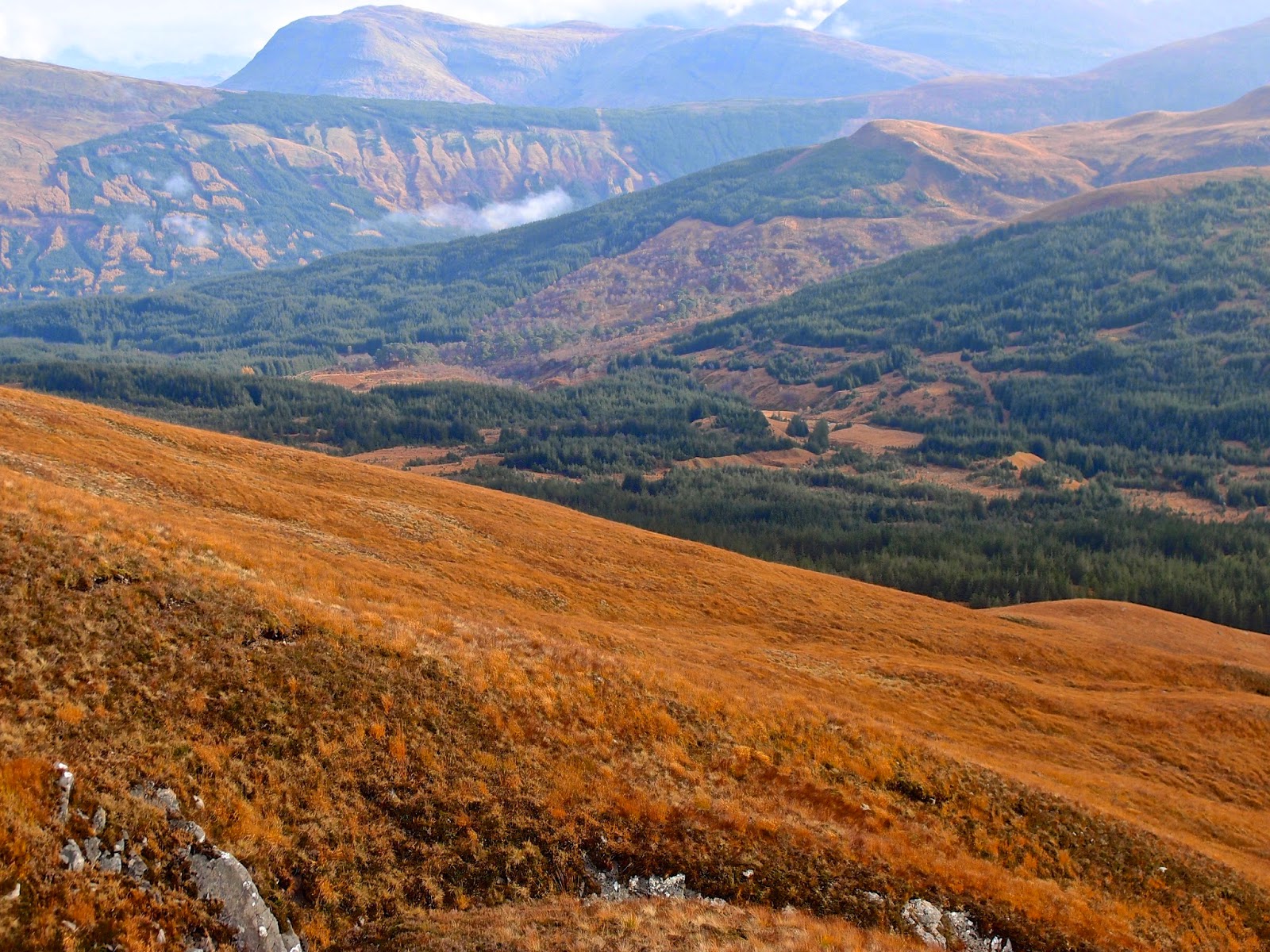 |
| River Orchy falls at Eas Urchaidh |
 |
| River Orchy at Eas Urchaidh |
 |
| Beinn Mhic-Mhonaidh from south |
 |
| Summit ridge and cairn of Beinn Mhic-Mhonaidh from south-west |
 |
| Looking south west towards Beinn Eunaich |
 |
| Looking East to ascent route and Beinn Chuirn |
Wednesday, 29 October 2014
Ascent: 805 metres
Distance: 14 kilometres
Time: 4 hours 31 minutes
c Beinn Mhic-Mhonaidh 796m 2hrs 39mins
It had been quite a while since I had been on the hills and a stubborn cold had restricted my activities and ebullience over the last week. I normally shake them off with a run or a decent walk and for the first time in a week, it was to be a dry day. Mark had recently retired and we agreed to climb Beinn Mhic-Mhonaidh, a shy Corbett in Glen Orchy. It is hidden beyond the forestry plantations that dominate this beautiful glen in Argyll. For whatever reason, I had never ventured down the glen before despite it being little more than an hour away from home. After the recent rains, the river Orchy was in spate and provided a wonderful spectacle as we travelled down the glen from Bridge of Orchy. I parked by the bridge at Eas Urchaidh and we were enthralled by the waterfalls just upriver from the bridge.
The guidebooks and walk guides had been disparaging about the walk-in, describing tough river crossings over the Allt Broighleachan and a boggy track through the forest. Mark confirmed these fears from his previous experience of the hill and we had just suffered three days of torrential rain that had closed several local roads through landslips. In practice, it was a good trail up to a meadow at 2 kilometres and a bridge here led to another less distinct trail leading westwards and crossing a couple of burns. We managed to get across these with dry feet and arrived at the stile by the remnants of shielings at Airigh Chailleach. From here there is little alternative but to slog up the steep south-east face of the long ridge of Beinn Mhic-Mhonaidh - 600 metres of unrelenting boggy grassy slopes. The damp conditions made defying gravity more of a trial than usual as did my cold. Normally I would put my head down and slog up the slopes but today I needed some breaks to stop, talk and relieve the tedium and aching legs.
Visibility was not as good as we had hoped with the surrounding hills coated in thin mists. Once on the southwest end of the ridge, it was a pleasant stroll to the significant summit cairn. There was little wind and it had been a hard sweat on the ascent but I soon cooled down whilst eating some lunch. We continued along the summit ridge to the lochan just north of the summit. Unfortunately, it was also bathed in mist, before turning south and heading down the challenging gradient of tussocky grass and bogs back to the shielings. I was drained of energy as we clambered the stile and began the final 5 kilometres down the trails through the plantations to the River Orchy and car park.
The highlight of the walk back was the sighting of a medium-sized dark brown mammal which could have been a polecat. It was the colour of a fox but about 40cm long, it crossed the track about 25 metres ahead of us and disappeared into the grassland adjoining the burn. The image below is a good likeness and apparently, Polecats have been seen in Argyll in recent years. Arriving at the bridge we were confronted with more non-native mammals in the shape of 30 or so young people viewing the waterfalls during the English school holidays.
 |
| Polecat |









.jpg)

